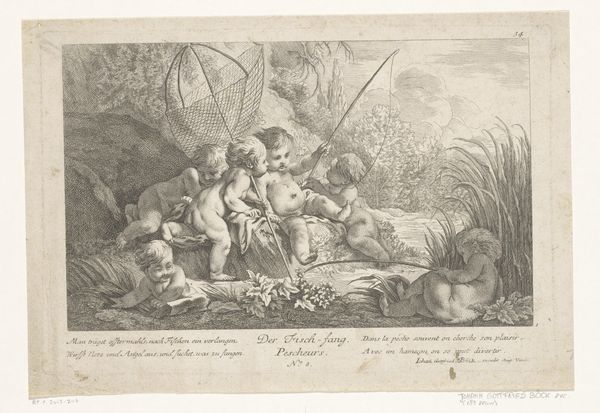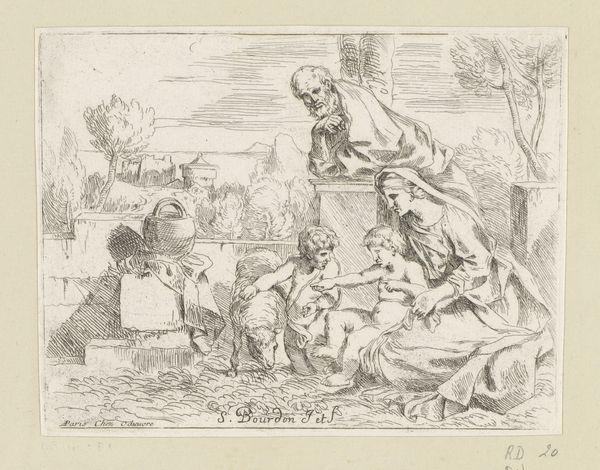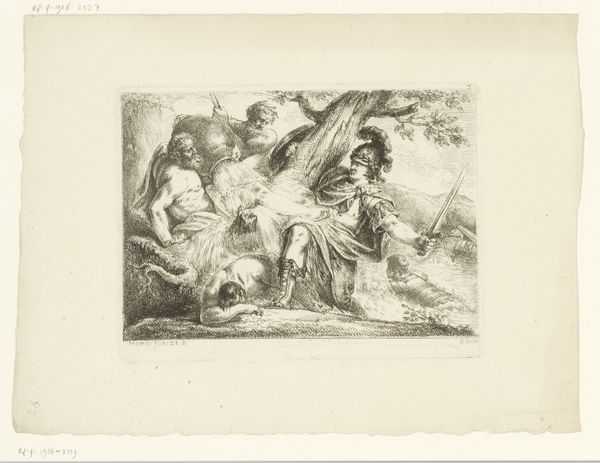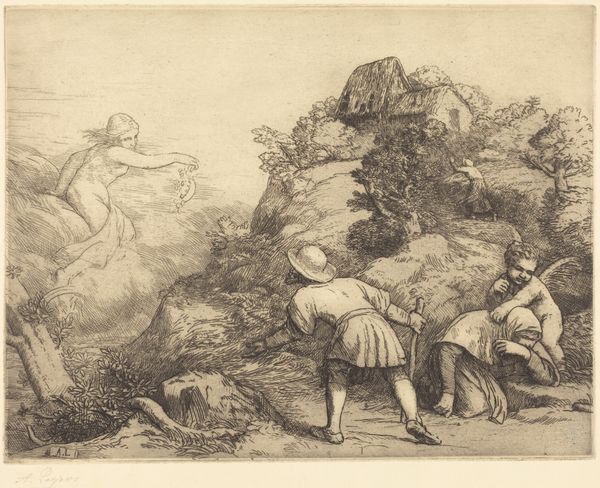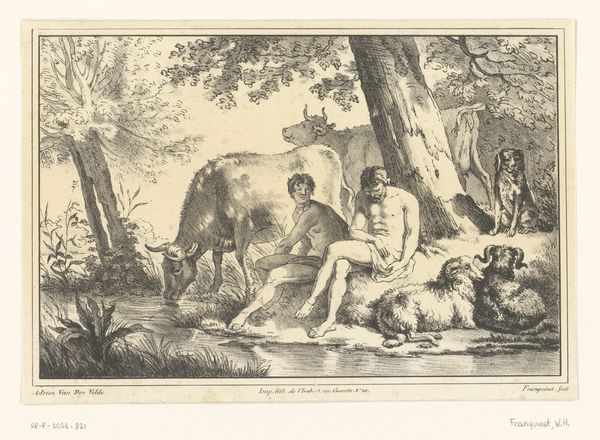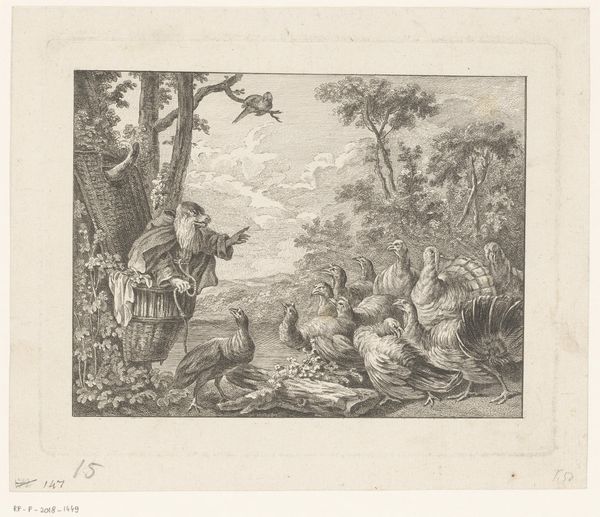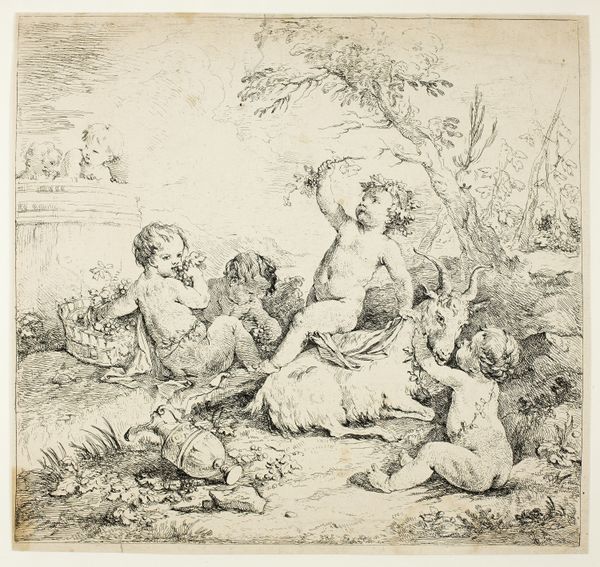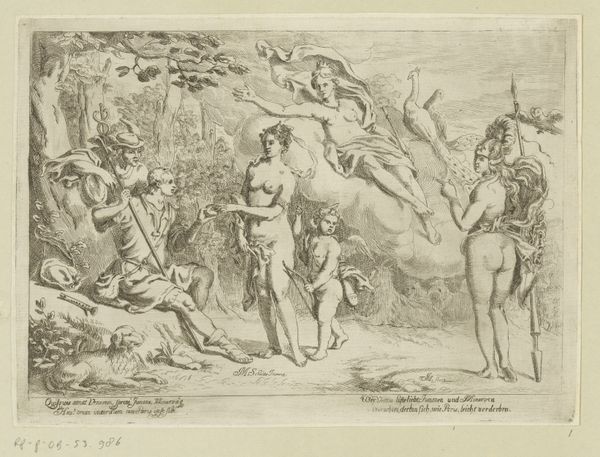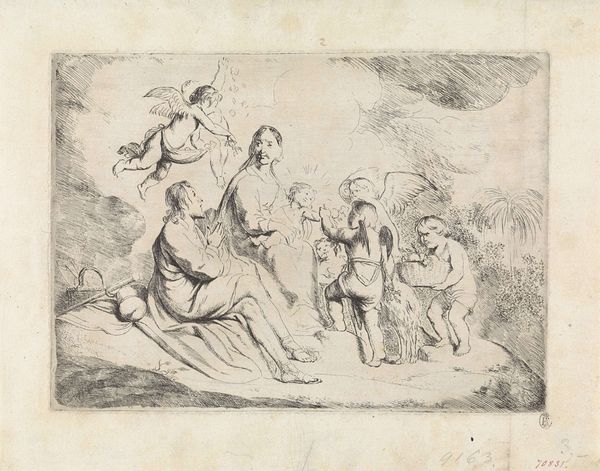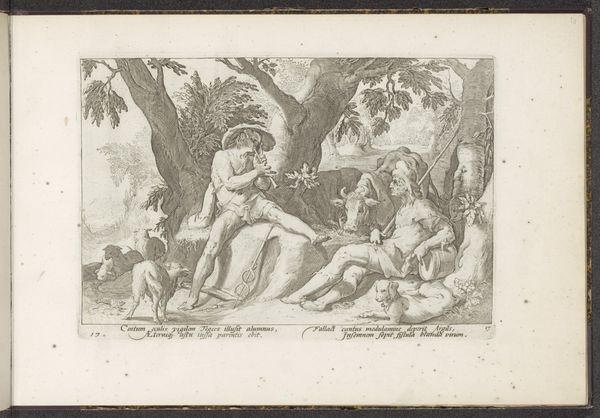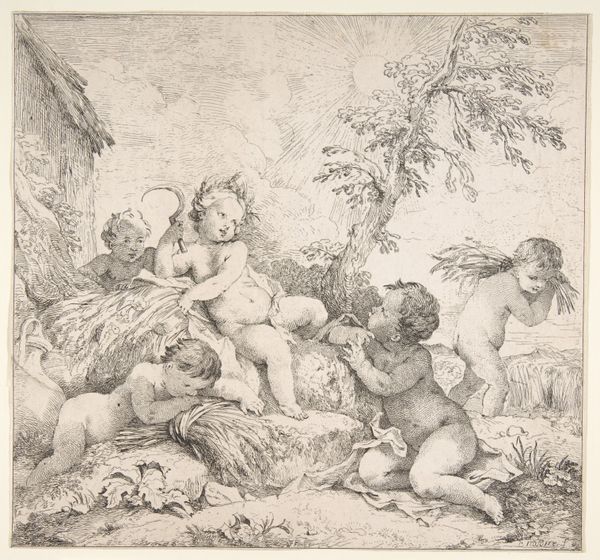
Dimensions: height 124 mm, width 177 mm
Copyright: Rijks Museum: Open Domain
Curator: Here we have "Saters en nimfen," or "Satyrs and Nymphs," an ink drawing made with pen created sometime between 1750 and 1800. It resides here at the Rijksmuseum. Editor: It's…chaotic. Like a bacchanal distilled into monochrome. So many babies! It's intriguing, but what’s immediately striking is the frenetic energy held in check by the classical composition. Curator: Yes, it's a very dynamic composition. Look at the groupings, the clear allegorical references to fertility and abundance. This piece fits neatly into a Baroque tradition of celebrating classical myths. Consider the social context. These playful mythological scenes were popular in a society embracing increasingly secular ideas but still enamored with classical aesthetics. Editor: It makes me wonder about the intent. Is this just an exercise in academic skill, showcasing knowledge of classical themes? Or is there a subversive element? The overabundance feels…almost satirical. Is it a comment on the burden of motherhood, or the excesses of the aristocracy? Curator: Perhaps both. The ambiguity is part of its strength. Artists were often commissioned by wealthy patrons, and while they certainly had creative license, their work was often tied to specific agendas, expressing or negotiating contemporary norms through classical subjects. Editor: I’m curious about the satyrs themselves. Their hybridity, half-human, half-animal, has always been a potent symbol of transgression. And here, surrounded by so many innocents, what does their presence signify? Curator: That’s an interesting point to make. We can see the clear binary opposition of nature and culture, the rational versus the instinctual, or order opposed to chaos. By representing it, society at the time attempts to exert symbolic control of this idea, domesticating it to an extend, which the placement within the picture emphasizes. Editor: Ultimately, I find it fascinating how this image teeters on the edge. It hints at liberation, even hedonism, yet it's contained within a framework that seems designed to maintain social order. It raises more questions than it answers, which, in my book, is a mark of compelling art. Curator: I agree, the complexities of this work make it all the more interesting. It's a reminder that even seemingly straightforward classical imagery can be a site of negotiation, reflecting the social and political currents of its time.
Comments
No comments
Be the first to comment and join the conversation on the ultimate creative platform.
